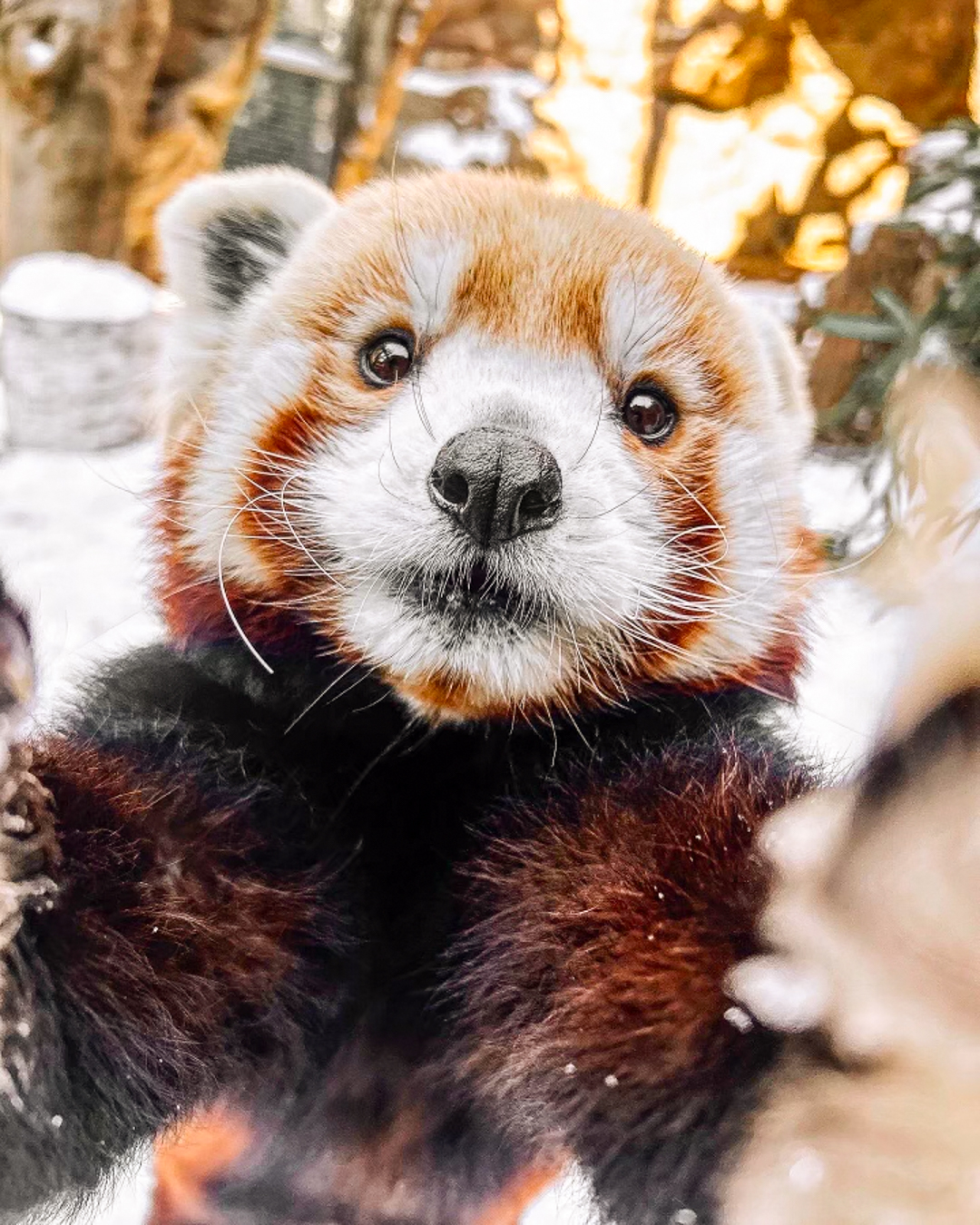- Impact of social media presence on modern wildlife conservation efforts.
- Overview of digital engagement strategies used by zoos to foster education and public interest.
- Insights into the behavior and social structures of animals in captivity.
- The role of innovative technology in animal welfare and habitat enrichment.
- Challenges and future directions in zoo management and conservation partnerships.
In recent years, social media has emerged as a vital tool in the sphere of wildlife conservation. Platforms like Instagram, with their potent visual appeal, are leveraged by conservationists to enhance public awareness and advocacy. The humorous and captivating narrative of "QUICK! It’s me, Khumbie! I’m taking selfies and full control of Instagram!" exemplifies the growing trend of anthropomorphizing animals to bridge the gap between human empathy and wildlife. This narrative serves not only to engage audiences but also to promote significant conservation messages.
The presence of animals on social media helps zoos and conservationists reach global audiences. It creates a sense of proximity and relatability that is often hard to achieve through traditional channels. When Khumbie takes the digital spotlight, it highlights the importance of wildlife and the pressing issues they face in a rapidly changing world. Social media thus becomes a modern-day platform for storytelling and advocacy, promoting the need for conservation-driven action.
Zoos have adapted to this digital era by incorporating diverse online engagement strategies. By showcasing daily life and personalities of animals like Khumbie, these institutions aim to foster a deeper connection between the public and wildlife. These playful and educational representations encourage viewers to learn about animal behaviors and threats they face, spurring conservation efforts. Comments and online interactions further amplify these efforts, as they humanize these animals and enhance empathy toward their cause.
Educational initiatives are no longer confined to physical visits. Zoos use social media platforms to provide interactive learning experiences. Virtual tours, live feeds, and direct interactions on posts like those of Khumbie can lead to increased awareness about species’ realities. By presenting these animals as dynamic participants in their own stories, zoos engage audiences across demographics, fostering an informed and proactive community that supports conservation efforts.
Understanding animal behavior, particularly in captivity, is crucial for scientific research and management. While Khumbie’s antics on Instagram are entertainment for viewers, they reveal deeper insights into the social structures and individuality of animals like meerkats. Social media interactions allow researchers to gather casual observations about animal behavior that might otherwise go unnoticed. It opens dialogs on how animals socialize, problem-solve, and adapt to their environments — both natural and constructed.
Captive environments can sometimes skew natural behaviors due to limitations in space and complexity versus wild habitats. Social media thus acts as a window into these structures for a wider audience. Exhibits can be adjusted based on public feedback and scientific observations to ensure habitats are conducive to naturalistic behaviors. Enrichment activities highlighted on platforms like Instagram demonstrate a zoo’s commitment to animal welfare.
Innovation in technology has also revolutionized habitat enrichment and animal care. Zoos integrate advanced monitoring systems and interactive tools to simulate natural conditions and stimulate mental challenge and variety for the animals. Through social media narratives, the details of these innovations reach an engaged public eager to understand and support these efforts.
Collaborations with tech companies have expanded, owing to heightened public interest sustained by digital engagement strategies. This public support fosters opportunities for new research and advances, as institutions use their expanded reach to crowd-source funding and spotlight lesser-known conservation issues. Moreover, platforms give a voice to lesser-known species, potentially increasing their profiles and thus conservation efforts.
Zoo management faces multifaceted challenges, including habitat design, dietary needs, and breeding programs to maintain genetic diversity. An animal’s playful online features can mask the significant behind-the-scenes efforts involved in maintaining health and well-being. Increased public interest through social media like Khumbie’s series can drive investment in substantial resources required for these programs.
Thought leaders in zoo management emphasize building partnerships with conservation organizations, governmental bodies, and the public. These alliances are crucial for knowledge exchange and technology sharing, ensuring the success of global biodiversity initiatives. Digital communication plays an integral role in promoting these partnerships and fostering shared goals.
The future of wildlife conservation is promising, with the potential for meaningful engagement expanding thanks to these dynamic online platforms. As zoos continue to adapt, integrating social media strategies like Khumbie’s playful takeover appeals to audiences and rallies visibility for wildlife welfare. These digital endeavors generate awareness and foster a community actively involved in global wildlife conservation efforts.
The journey of Khumbie on Instagram is not only a reflection of modern conservation strategies but a call to action. It represents how individuals, far removed from these animals’ natural habitats, can contribute to the protection of these species through knowledge and engagement. Each post is a reminder of the responsibilities humans have in stewarding the planet’s biodiversity.
The use of social media by animals like Khumbie fosters a sense of immediacy and urgency, propelling both outreach and conservation. Through humorous, engaging content, zoos guide the public to become not just spectators, but active participants in the conservation narrative—instilling a legacy of compassion and stewardship for future generations.
*****
Source Description
QUICK! It’s me, Khumbie! I’m taking selfies and full control of Instagram! Come chat with me in the comments before admin realizes what’s going on (or just send snacks) 😁


